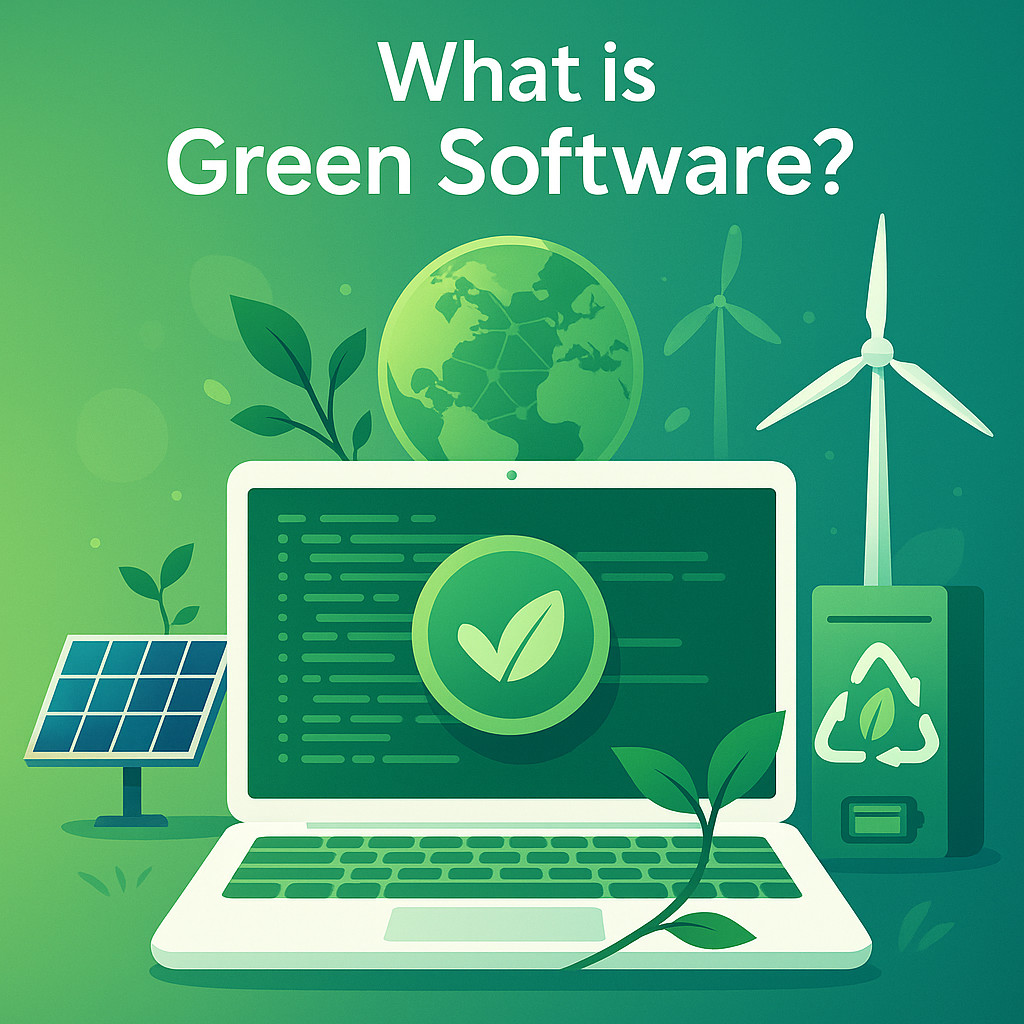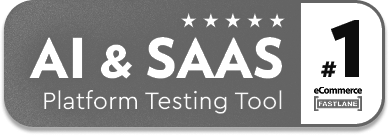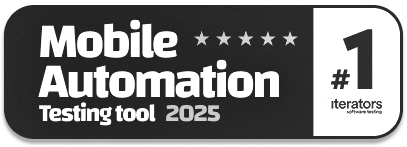What is Green Software?
|
|
Global warming and the climate crisis are undeniable challenges today that need committed, synchronized, and collaborative efforts from countries, governments, companies, and civil society. As per the Paris Agreement, the goal is to keep the global temperature below 2°C by 2050 compared to the pre-industrial era and preferably within the limit of 1.5°C. To achieve this goal, everyone needs to do their part, as this is not the responsibility and challenge of a single entity.
The Information and Communications Technology (ICT) sector has a significant role in global greenhouse gas (GHG) emissions due to the growing energy consumption. For example, Hugging Face, an AI company, looked at the carbon footprint of its BLOOM language model from start to finish, including making the equipment and using the model. They found that just the final training produced 50 tonnes of CO₂ emissions.
In this context, Green Software emerges as a type of sustainable technology that aims at reducing environmental impact and enables the resolution of sustainability problems and use cases in general.
| Key Takeaways: |
|---|
|

In this article, we will explore the meaning of green software, its principles, why it matters, its benefits and challenges, and its promising future in combating climate change.
Green Software: Definition
Green Software is an efficient software designed, developed, deployed, and maintained to minimize energy consumption and environmental impact by cultivating faster, higher-quality systems.
Green software is an emerging discipline called “sustainable software”. Several aspects of green software include optimizing software performance, reducing hardware requirements, extending device lifecycles, and lowering greenhouse gas (GHG) emissions associated with computing tasks.
Green software engineering considers software practices and architecture, hardware and data center design, electricity markets, and climate change. It involves both technical and organizational practices such as:
- Writing energy-efficient code
- Reducing storage requirements and data transmission
- Optimizing algorithms and workloads
- Using cloud infrastructure powered by renewable energy, read: Cloud Computing as a Career for Software Developers
- Designing for longevity and upgradability
In essence, Green Software is not just about “how” software is written but also “where” and “on what” it runs.
Why Green Software Matters
There are two main reasons for green software to take center stage:
The Carbon Footprint of Software
The GHG emissions by the ICT sector are around 3-4% of total global emissions, and this number is rising rapidly. Data centers alone are contributing significantly to this due to their high electricity consumption and cooling demands. In addition, there is widespread use of inefficient software running on power-hungry infrastructure that makes the situation grave.
For example:
- Close to 36 grams of CO₂ are emitted by streaming a video for one hour, depending on resolution and network conditions.
- Charging cycles and energy use increase as poorly optimized mobile apps drain battery life faster.
- A single training session of AI and machine learning workloads is highly energy-intensive and consumes megawatt-hours. Read: How to Utilize Human-AI Collaboration for Enhancing Software Development.
Business and Regulatory Pressures
Sustainability is fast becoming a regulatory and business imperative; it is no longer a moral obligation. Organizations face increasing pressure from:
- Government regulations (e.g., EU Green Deal, SEC climate disclosures)
- Obligations from ESG (Environmental, Social, Governance) reporting.
- Customer preference for eco-friendly digital products
- Shareholder activism
Businesses can use green software to align with these demands and build a competitive advantage through environmental stewardship.
The Benefits of Green Software
In addition to the environmental benefits, green software has other advantages, making a strong business case for green software engineering. Some of its advantages include:
- Simpler Architecture: Green software architecture has fewer dependencies, and the systems are usually less complicated. They are more straightforward and energy-efficient.
- Faster Computing Speed: Since the systems are more straightforward and less complicated, they are quicker.
- Low Resource Usage: Green systems use fewer resources and less energy, thus lowering the overall costs.
- Brand Resilience: Consumers prefer companies with sustainable business practices and green products. Hence, organizations that make or use green software can build brand loyalty.
Core Principles of Green Software
Green Software is a relatively new discipline, and the Green Software Foundation is a leading authority in this field. The Green Software Foundation was established in 2019 and outlined an initial set of 8 principles updated in 2022. Software engineers should follow these core principles when designing, building, and deploying sustainable software applications.
The core principles of green software are summarized as follows:
1. Energy Efficiency
The central part of the world’s electricity is still produced from coal, which is on the verge of extinction. One of the most important and effective ways to make software more energy efficient is to lower energy consumption. This involves:
- Choosing efficient algorithms and data structures
- Reducing unnecessary computations
- Using caching and parallel processing for faster processing
2. Carbon Awareness
Being carbon-efficient means reducing the amount of carbon released into the atmosphere per unit of work. In software development, this translates into building applications that emit less carbon while bringing users the same or better value.
Developers should understand and act upon the carbon intensity of the energy being used, for instance, schedule tasks when renewable energy is most available on the grid.
3. Carbon Intensity
It is the amount of carbon emissions generated per kilowatt-hour of electricity consumed. Electricity produced using renewable sources such as wind, solar, or hydroelectric has a lower carbon intensity than electricity from fossil fuels.
While developing and running software, developers should consume as much electricity from renewable sources as possible to reduce carbon intensity.
4. Embodied Carbon
The amount of carbon released during the creation or disposal of electronic devices constitutes embodied or embedded carbon. Embodied carbon cost of consumer devices is much higher than their lifetime electricity consumption.
Emissions should be kept to a minimum by building hardware-efficient applications and accounting for the carbon required to run the computer and the embodied carbon when calculating the total carbon pollution.
5. Energy Proportionality
This measures the relationship between a computer system’s power consumption and the percentage of its resources utilized. When running at maximum capacity, a device is fully utilized and has a high utilization percentage. An idle device has low utilization.
The more the computer is utilized, the better it gets at converting electricity. Hence, try using a few servers with a high utilization rate to ensure maximum energy efficiency.
6. Networking
Data sent or received across the Internet travels through multiple connected devices, including servers, routers, and switches. Each of these network devices has embedded carbon and consumes electricity.
Reducing the size of the data and the distance it travels across the network can minimize these carbon emissions.
7. Demand Shaping
This is a strategy of moving demand for computing power to a different region or time and ‘shaping’ it to match available supply. In demand shaping, the demand is controlled by designing systems that defer or reduce consumption.
Examples of demand shaping include:
- Adaptive quality of video streaming, where the demand is shaped by reducing the video quality while prioritizing the audio quality
- Dynamic throttling of background tasks
8. Measurement and Optimization
Sustainability is not a one-time choice, but a long-term strategy. Developers should adopt a consistent approach using incremental optimizations to boost total carbon efficiency. Understanding the full tech stack, user experience, data center layout, and electricity grids produces the best results. In addition, the costs of decarbonization are weighed against potential benefits, and the parts of the application architecture that are likely to yield the highest returns are prioritized. Read: How to Choose the Right Tech Stack for Engineering?
Green Software in Practice
Some of the considerations to be given for green software include:
Efficient Coding
Writing efficient code is at the foundational level of Green Software. This involves:
- Avoid bloated libraries and frameworks
- Use compiled languages wherever possible (e.g., Go vs. Python)
- Optimize memory usage and programming constructs like loops and recursion
Green Hosting
A hosting provider chosen should have a solid environmental commitment. Consider the following:
- Data centers with PUE (Power Usage Effectiveness) < 1.2
- Providers with carbon neutrality pledges
- Geographic locations with abundant renewable resources
Cloud Computing
In carbon-intelligent computing offered by cloud providers, workloads are scheduled based on energy grid data. Cloud providers help developers decide where and when to run their applications. The following tools help in this:
- Google Cloud’s Carbon Footprint reports
- Azure Sustainability Calculator
- AWS Well-Architected Sustainability Pillar
Green Algorithms
Algorithms vary in terms of their energy use. For instance:
- Sorting algorithms vary in time complexity and, therefore, in CPU use
- Machine learning models can be tuned for faster convergence and lower training times
Frontend Efficiency
Web developers play a role in improving the frontend efficiency:
- Optimize images and fonts
- Lazy-load content
- Reduce JavaScript payloads
- Prefer static sites where possible
These measures reduce the page load times and energy use on client devices.
Metrics for Green Software
Metrics are used to make meaningful improvements. Common ones used in green software include:
| Metric | Use |
|---|---|
| Energy Consumption (kWh) | Direct measurement via tools or estimated based on workload |
| Carbon Emissions (CO₂e) | Measured in grams or kilograms of CO₂ equivalent emitted per unit of software operation. |
| Resource Intensity | CPU cycles, memory usage, and bandwidth are indirect energy use indicators. |
| Sustainability Score | Some organizations assign sustainability scores based on multiple dimensions such as energy use, emissions, water footprint, and e-waste generation. |
Emerging tools like the Green Metrics Tool, Scaphandre, and Cloud Carbon Footprint help standardize and track these metrics.
Challenges in Adopting Green Software
Green software faces several challenges despite its promise of sustainability:
- Lack of Awareness: Most developers are ignorant of the impact of their code or the tools’ impact on the environment, or how they negatively impact the climate. They are also unaware of the tools available to mitigate this impact.
- Measurement Complexity: It is difficult to measure software’s exact energy use in different environments. Hence, developers cannot decide whether their specific action will impact the environment.
- Trade-offs with Performance: Measurement and optimization techniques have to be balanced carefully, as sometimes, optimizing for energy may reduce performance or user experience.
- Incentive Misalignment: Product development teams usually receive incentives and rewards based on features and delivery speed, not sustainability. This misalignment results in developers focusing on tasks that could earn them more rewards.
- Legacy Systems: Replacing older legacy systems can be expensive and disruptive.
Industry Examples of Green Software
Various organizations are willing to commit to addressing the worldwide climate crisis by becoming carbon neutral, if not carbon negative. Famous tech companies, Microsoft, Thoughtworks, Accenture, and GitHub joined hands in May 2021 with Joint Development Foundation Projects LLC and The Linux Foundation to establish the Green Software Foundation, a non-profit organization for developing a network of “standards, people, tools, and best practices for green software.” These organizations have made individual commitments to address the climate crisis.
Here are some of the facts about organizations that promote green software:
Microsoft
Microsoft designs, builds, and implements sustainable applications and has committed to becoming carbon negative by 2030. It also integrates sustainability into its cloud services. The company uses telemetry to improve software energy efficiency across products like Windows and Office.
Accenture
Accenture has its own green software tools, framework, and best practices with 95% of all its applications running in the public cloud. It has trained more than 70,000 of its developers on green software engineering practices.
Thoughtworks
Thoughtworks offers its green software technology, Green Cloud, which has the potential to directly reduce carbon emissions.
GitHub
GitHub has introduced features like dark mode, which saves energy on OLED screens, and has participated in research to estimate software emissions. All the development and use of the GitHub platform have been carbon neutral since 2019.
Google aligns its workload with clean energy availability by optimizing its data centers for energy efficiency and has pioneered carbon-intelligent computing.
VMware
VMware, joined the Green Software Foundation in January 2022 and is increasing the use of energy-efficient IT infrastructure to help reduce the total amount of energy needed to run workloads.
Spotify
Spotify has introduced Adaptive Streaming, which adjusts audio quality based on network conditions, reducing data (and energy) usage.
The Future of Green Software
In the future, the demand for sustainable software will only grow as climate change accelerates. The green software future may include:
- Green-aware compilers with the capability to auto-optimize code for energy efficiency
- AI-driven sustainability analyzers providing real-time feedback during development, read: AI in Engineering – Ethical Implications.
- Energy labels for software to recognize their energy-saving effort, similar to Energy Star ratings for appliances
- Collaborative ecosystems for developers to share green patterns and tools
As the world transforms toward sustainability, green software will become a default expectation, not a niche concern.
Conclusion
Green software is a crucial step in reducing the digital world’s environmental footprint. With green software, the tool is not just for productivity and entertainment but also for sustainability. By embracing efficient coding, using renewable-powered infrastructure, and promoting awareness, a digital landscape that is both innovative and ecologically sustainable can be created.
Whether you are a developer, software engineer, product manager, CTO, or CEO, the green software shift presents an opportunity to contribute meaningfully to environmental well-being.
| Achieve More Than 90% Test Automation | |
| Step by Step Walkthroughs and Help | |
| 14 Day Free Trial, Cancel Anytime |












